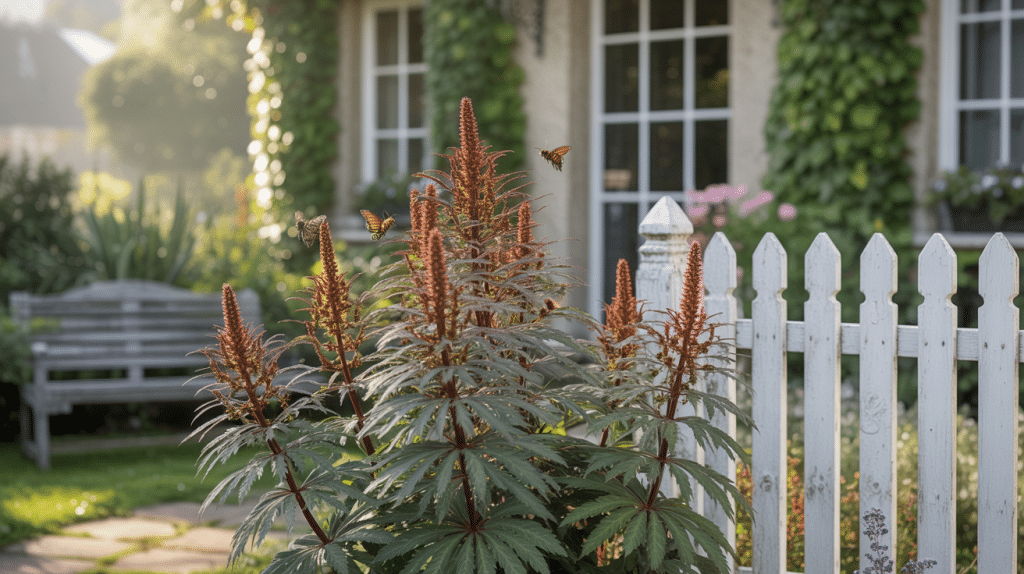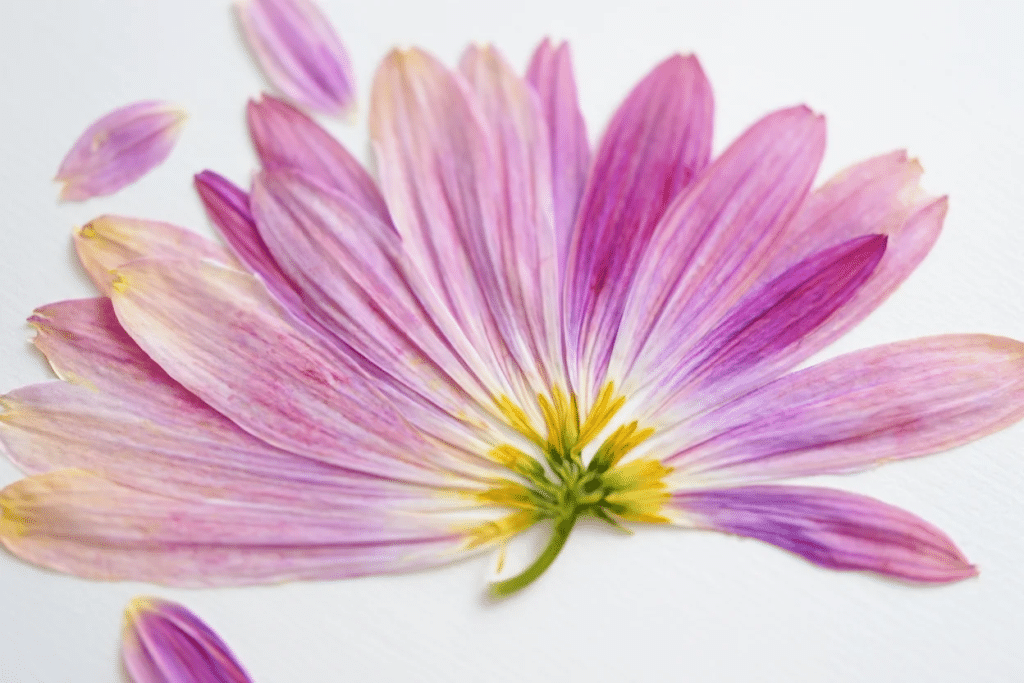Finding plants that make a statement in your garden can be tough.
I’ve been there too, searching for something that stands out yet doesn’t need constant care. Melianthus major fits this bill perfectly. It’s a striking South African plant with blue, green leaves that turn heads in any garden setting.
I’m going to show you why this plant deserves a spot in your outdoor space. You’ll learn about its origins, how to care for it, and the many ways it can bring life to your garden.
In this blog post, I’ll walk through everything from growing conditions to pairing suggestions that will help you make the most of this wonderful plant.
What is Melianthus Major?
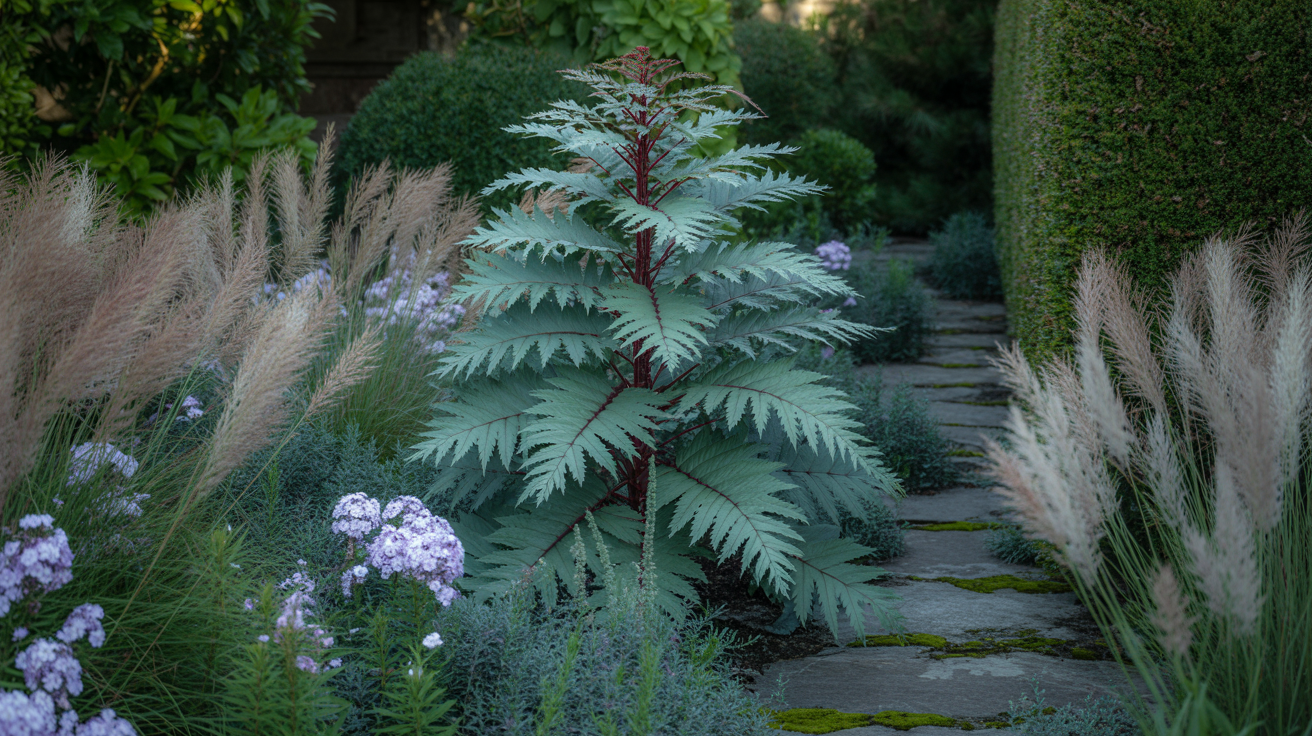
In my years of gardening, Melianthus major stands out as a true favorite. This evergreen shrub from South Africa’s dry southwestern Cape thrives in tough conditions and adapts to many soil types.
Known as “Honey Bush” for its nectar-rich flowers, it’s both beautiful and a bit mysterious.
What sets it apart are its bold, blue-green leaves, deeply cut, sharply toothed, and up to a foot long. The plant’s strong form and striking foliage always draw attention in my garden.
And when brushed, the leaves release a surprising scent reminiscent of peanut butter, making this plant as memorable for its aroma as for its appearance.
Not sure what planters to look for? Check out our guide on Shopping Smart at A Garden Thrift Store
Why Gardeners Love Melianthus Major?
| Category | Details |
|---|---|
| Visual Appeal | Blue-gray, bold textured leaves; tropical look |
| Unique Scent | Leaves smell like peanut butter when touched |
| Year-Round Interest | Evergreen in mild zones; holds form in winter |
| Maintenance | Low effort; occasional watering, light spring pruning |
| Soil Tolerance | Thrives in poor to average soil; needs good drainage |
| Wildlife Value | Attracts bees, butterflies, birds; nectar-rich red blooms |
| Garden Impact | Bold focal plant; contrasts well with fine-textured companions |
Growing Melianthus Major at Home
I’ve grown Honey Bush in several settings over the years, and I’ve picked up some practical tips along the way. Let me share how you can get this stunning plant thriving in your garden too.
Picking the Perfect Spot
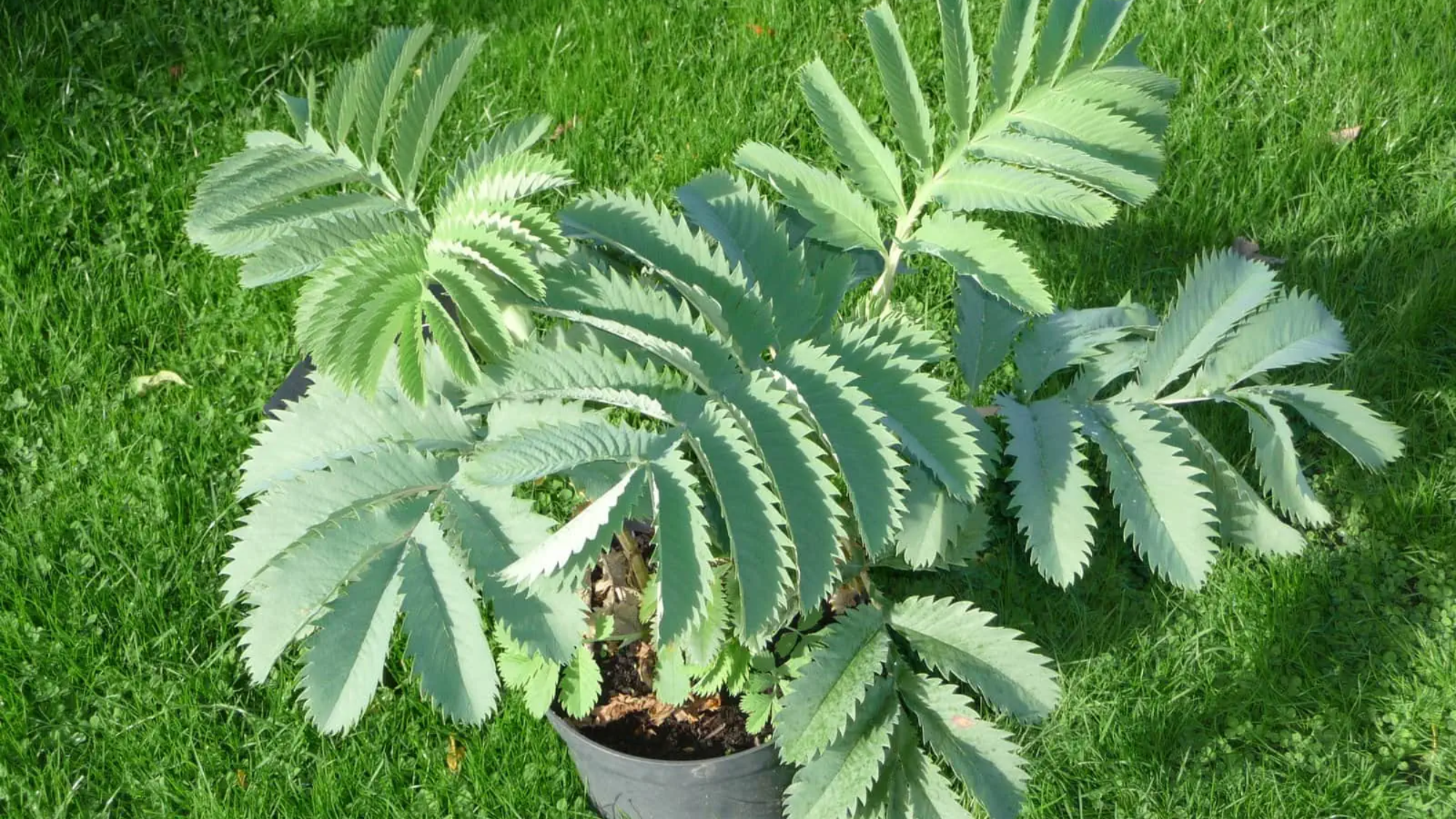
When I first planted Melianthus major, I learned that location matters a lot:
- Sun exposure: I’ve had the best results in full sun to light shade. In my experience, it needs at least 6 hours of sun daily to keep its shape tight.
- Space needs: Don’t crowd this plant! I give mine at least 3-4 feet of space since it can grow 6-10 feet tall and wide in ideal conditions.
- Wind protection: I found that strong winds can damage those big leaves, so I plant mine near a wall or fence for shelter.
Soil and Water Basics
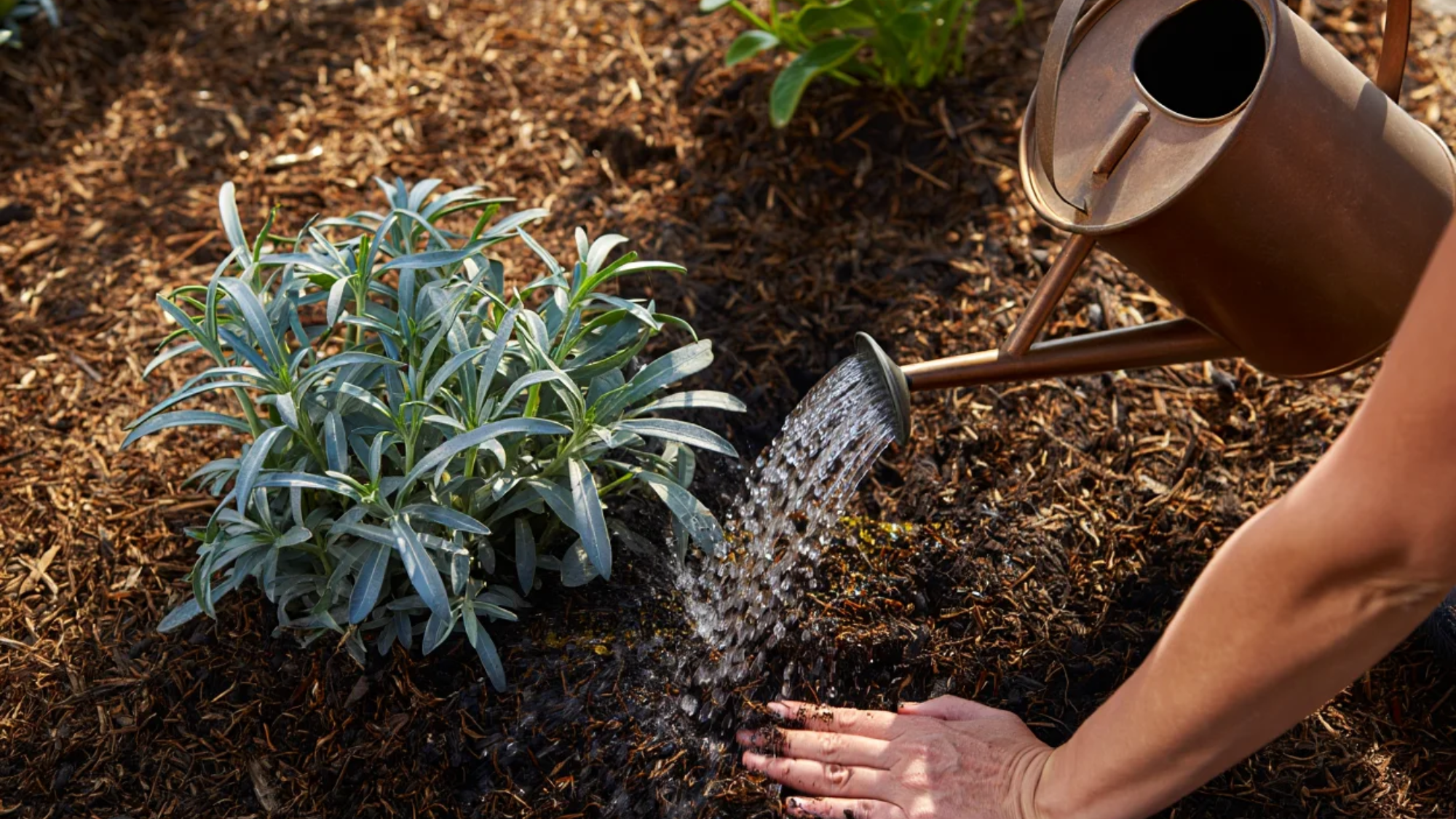
The soil mix makes a big difference for this plant’s health:
- Soil type: My Honey Bush grows happily in average garden soil, but it looks best in soil with good fertility.
- Drainage: This is crucial! I make sure the soil drains well; my first plant rotted because I put it in a soggy spot.
For watering, I follow this simple pattern:
- Water deeply once a week during the growing season.
- Cut back significantly in winter.
- Let the top inch of soil dry out between waterings.
Seasonal Care and Maintenance
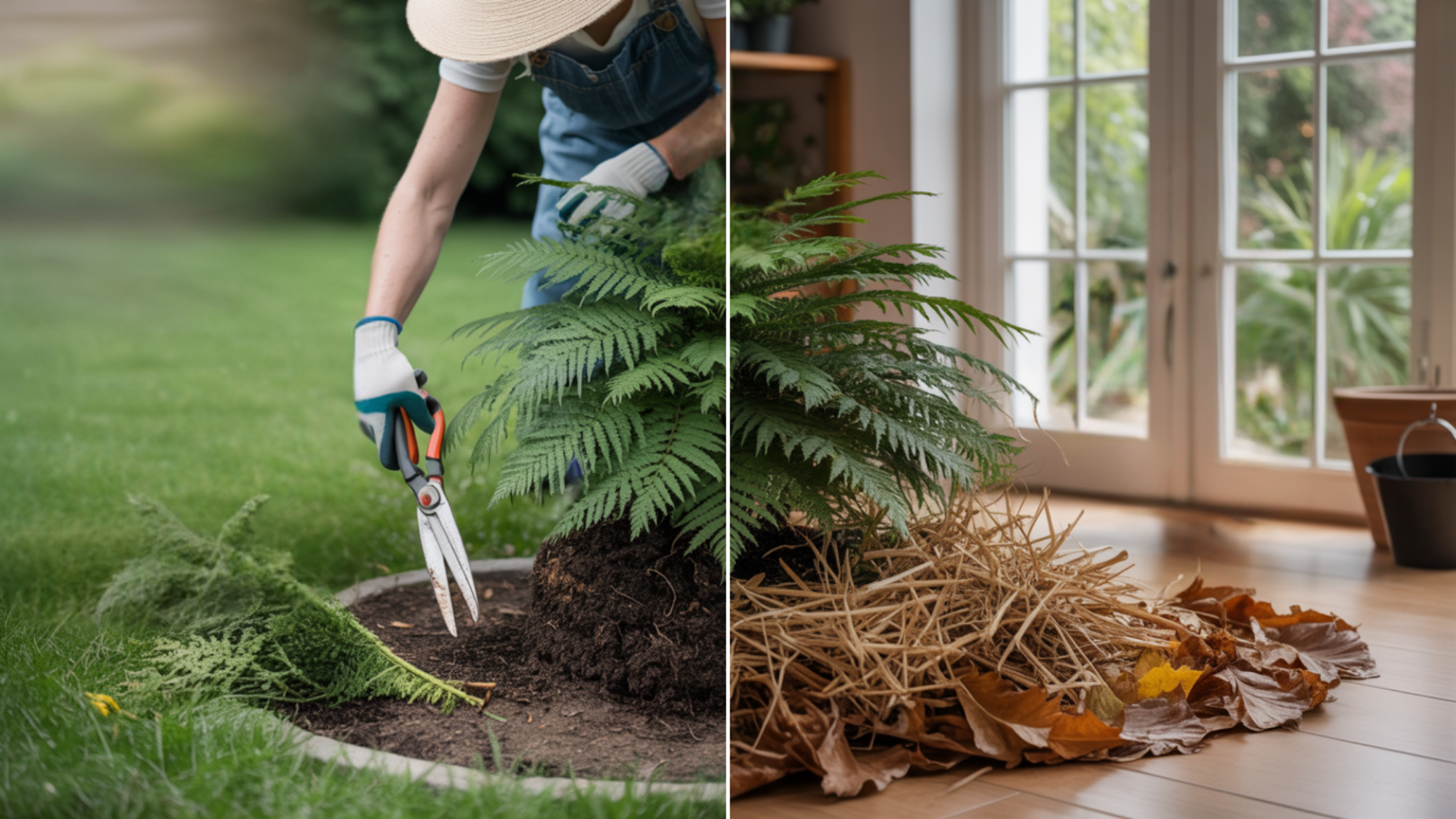
1. Spring Pruning
I cut my Melianthus back hard every spring, and it rewards me with fresh, vibrant growth. This rejuvenation pruning removes old foliage and stimulates lush new leaves with their distinctive blue-green color.
The plant responds quickly, often doubling in size by midsummer with more architectural form and better overall appearance.
2. Winter Protection
In my garden (Zone 6), I treat Melianthus as a container plant that comes inside for winter, placing it in a cool, bright location where it continues slow growth.
Alternatively, I grow it as a “die-back perennial” with heavy mulch protection around the crown. This insulation helps the roots survive even when top growth is damaged by frost.
Common Problems
In my years growing this plant, I’ve encountered a few issues:
- Leggy growth: When it doesn’t get enough sun, it stretches and looks sparse.
- Leaf spots: Too much water on the leaves can cause fungal spots.
- Poor flowering: In cooler zones, it rarely flowers (but the foliage is still worth it). By keeping these tips in mind, I’ve enjoyed the dramatic presence of Melianthus major in my garden for years. Even in cooler climates where it might not flower, those stunning blue-green leaves make it worth the effort.
Uses of Melianthus major
Many admire this plant for its dramatic foliage, but this plant offers more than just beauty. Over the years, I’ve discovered several fascinating and practical uses, some surprising, some essential to know.
1. Natural Insect Repellent
Dried leaves and flowers of Melianthus major are often placed in cupboards or storage areas. Their pungent, distinctive scent helps repel insects naturally, making them a chemical-free alternative for protecting clothes and food items from pests.
2. Traditional Wound Care
In some traditional practices, poultices made from the plant’s leaves are applied to septic wounds, sores, and bruises. The plant is believed to have soothing and healing properties, though care must be taken due to its overall toxicity.
3. Ornamental Water Feature Accent
With its bold, serrated leaves and tall, dramatic flower spikes, Melianthus major is a favorite for planting beside ponds and water gardens. Its lush foliage adds a tropical, architectural flair, making water features more visually striking.
4. Novelty Scent in Gardens
When the leaves are crushed, they release a unique peanut butter-like aroma. Gardeners often use this as a fun talking point or sensory experience, adding an unexpected dimension to garden tours and plant collections.
5. Pollinator Attraction
The nectar-rich, tubular flowers of the Honey Bush are highly attractive to birds such as sunbirds and bees. By supporting these pollinators, the plant helps maintain local biodiversity and encourages a healthy garden ecosystem.
Final Thoughts
After spending time with Melianthus major in my garden, I’m still amazed by how it stands out among other plants. Its blue-green leaves, unusual scent, and low care needs make it perfect for both new and skilled gardeners.
If you’re looking to add something special to your outdoor space, this South African native deserves your attention. Remember to give it sun, good drainage, and room to grow.
Ready to try growing a Honey Bush?
Start with a small plant from a local nursery, or grow your own from seeds. Your garden visitors will surely ask about this eye-catching plant.


